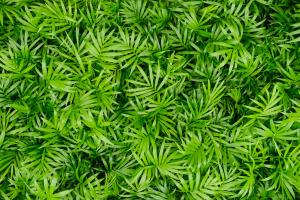How Plants and Tree Colors Draw the Eye
One of the most striking features of plants and trees in the natural world is their vibrant colors. From the deep green of leaves to the bright hues of flowers, the colors of vegetation are vital to the beauty and diversity of the ecosystem. These colors also play a crucial role in attracting the attention of humans and animals alike, drawing the eye and providing cues about the health and vitality of different plant species.
The Science of Plant and Tree Colors
The colors of plants and trees are the result of complex biological processes that involve pigments, light absorption, and reflection. Chlorophyll, the most well-known plant pigment, reflects green light and absorbs all other colors of the spectrum. This is why most leaves appear green to our eyes. Other pigments, such as anthocyanins, carotenoids, and flavonoids, are responsible for the red, yellow, orange, and blue colors that we see in leaves and flowers.
These pigments serve many purposes for plants and trees. For example, they can help protect leaves from sun damage by absorbing harmful UV radiation. They can also attract pollinators or seed dispersers, such as bees, butterflies, and birds, by providing visual cues that signify the presence of nectar or fruit. In addition, some pigments may act as antioxidants or antifungal agents, helping plants to maintain their health and resist disease.
The Importance of Color for Humans and Animals
The colorful world of plants and trees is not just a feast for the eyes, it is also crucial for the survival of many species. For example, pollinators rely on visual cues such as color, shape, and pattern to locate flowers and extract nectar or pollen. Birds and mammals use color to identify ripe fruit or edible leaves and avoid poisonous plants. In addition, color can serve as an indicator of seasonal changes or environmental conditions, such as drought, frost, or pollution.
For humans, the colors of plants and trees have both aesthetic and functional value. We are naturally drawn to beautiful and colorful landscapes, whether for relaxation, inspiration, or recreation. We also rely on plants and trees for food, medicine, and other resources, and the colors of different species can signal their nutritional or medicinal properties. Finally, plants and trees can have a psychological effect on us, influencing our mood, energy, and well-being.
The Future of Plant and Tree Colors
As climate change, deforestation, and urbanization continue to alter the natural world, the colors of plants and trees may also be impacted. Some studies have shown that rising temperatures and changes in light conditions can affect the production and composition of pigments in leaves and flowers. In addition, human activities such as pollution, habitat destruction, and overuse of pesticides can disturb the delicate balance of the ecosystem and threaten the survival of many plant species.
However, there is also hope for the future of plant and tree colors. Scientists and conservationists are working to protect and restore natural habitats and promote sustainable practices, which can help preserve the diversity and beauty of the natural world. They are also exploring new ways to use plant and tree pigments for art, fashion, and technology, which can inspire creativity and innovation while raising awareness about the importance of biodiversity and environmental stewardship.
In conclusion, the colors of plants and trees are not just a random or decorative aspect of the natural world, but a crucial and fascinating aspect of life on earth. By understanding and appreciating the science and significance of these colors, we can deepen our connection with nature and contribute to the health and well-being of the planet and its inhabitants.

 how many times do yo...
how many times do yo... how many planted tre...
how many planted tre... how many pine trees ...
how many pine trees ... how many pecan trees...
how many pecan trees... how many plants comp...
how many plants comp... how many plants can ...
how many plants can ... how many plants and ...
how many plants and ... how many pepper plan...
how many pepper plan...






























